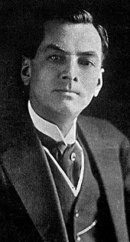Manuel L. Quezon
|
|
Template:Infobox Philippine president Manuel Luis Quezon y Molina (August 19, 1878 – August 1, 1944) was the first president of the Commonwealth of the Philippines. He is considered the second President of the Philippines, after Emilio Aguinaldo (whose administration did not receive international recognition at the time and is not considered the first president by the United States).
| Contents |
Early life and career
Manuel L. Quezon, a Spanish-mestizo, was born in Baler in the province of Tayabas (now Aurora). He fought with Filipino nationalists in the Philippine-American War, serving as an aide-de-camp of President Emilio Aguinaldo.
He received his primary education from his mother and tutors, then became a boarder at the Colegio de San Juan de Letran where he finished his secondary schooling. He studied law at the University of Santo Tomas and passed the bar examinations in 1903, placing fourth. He worked for a time as a clerk and surveyor, entering government service as an appointed fiscal for Mindoro and then Tayabas. He became a councilor and was elected governor of Tayabas in 1906 as an independent. In 1907 he was elected to the first Philippine Assembly, where he served as majority floor leader and chairman of the committee on appropriations. From 1909-1916 he served as one of the Philippines' two resident commissioners to the U.S. House of Representatives, lobbying for the passage of the Philippine Autonomy Act or Jones Law.
He was elected senator in 1916 and became Senate President, serving continuously as such until 1935. He headed the first Independence Mission to the U.S. Congress in 1919, and brought home the Tydings-McDuffie Independence Law in 1934.
In the United States, he personally met Napoleon Hill. He was inspired to stop at nothing to work for the independence of the Philippines.
Presidency
In 1935 Manuel L. Quezon won the Philippine's first national presidential election against Emilio Aguinaldo and Bishop Gregorio Aglipay. His original six year term without reelection was extended by constitutional amendment, allowing him to serve two additional years for a total of eight. He was reelected in November, 1941. In a notable humanitarian act, Quezon, in cooperation with United States High Commissioner Paul V. McNutt, facilitated the entry into the Philippines of Jewish refugees fleeing fascist regimes in Europe. Quezon was also instrumental in promoting a project to resettle the refugees in Mindanao.
After the Japanese invasion of the Philippines during World War II he fled to the United States. There, he served as a member of the Pacific War Council, signed the declaration of the United Nations against the Axis Powers, and wrote his autobiography (The Good Fight, 1946).
Quezon suffered from tuberculosis and died in Saranac Lake, New York on August 1, 1944. He was initially buried in Arlington National Cemetery. His body was later carried by the USS Princeton (CV-37) and re-interred in Manila, at the Manila North Cemetery and then moved to Quezon City within the monument at the Quezon Memorial Circle.
Quezon was married to his first cousin Aurora Aragon and had four children: Maria Aurora, Maria Zeneida, Luisa Corazon Paz and Manuel Jr.
Legacy
Quotes
"I prefer a country run like hell by Filipinos to a country run like heaven by Americans. Because, however bad a Filipino government might be, we can always change it."
"My loyalty to my party ends where my loyalty to my country begins."
"Social Justice is far more beneficial when applied as a matter of sentiment, and not of law."
See also
References
- The Philippine Presidency Project: Manuel L. Quezon (http://www.pangulo.ph/prexy_mlq.php)
- http://www.geocities.com/philippinepresidents/quezon.htm
External link
- Bonnie Harris, Cantor Joseph Cysner: From Zbaszyn to Manila -- The Creation of an American Holocaust Haven, [1] (http://www.history.ucsb.edu/faculty/marcuse/classes/233ab/zbaszynmanila/HarrisCysnerZbaszynManila.htm) describes Quezon's role in helping Jewish refugees settle in the Philippines.

